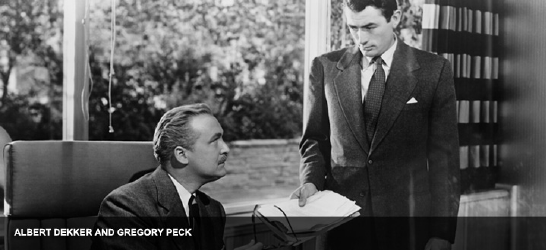
Andy Murray – feel the love!

I’m sure I wasn’t the only person to shed a tear at the sight of Andy Murray lifting the Wimbledon trophy above his head on Sunday. It was a fantastic, hard-won and emotional victory. Reflecting on Andy Murray’s progress over the last few years I realised that emotion has played a major part in his development as a player and has contributed to the remarkable increase in his fan-base. Success is often helped by having a loyal and strong following – in sport as well as in business – and it is important to understand that emotion is a key factor in both contexts.
Three years ago Andy Murray was a difficult character to like. He had a fan-base but had not earned a great deal of support from the general public. He was criticised for being moody and stony-faced – someone who was so focussed on his sport that he was a ‘closed-book’ to observers. That all changed last year when, on losing the Wimbledon final to Roger Federer, Murray found it hard to speak through his tears of disappointment. These were not carefully planned tears, put on for PR purposes, but genuine sobs that he tried so hard to fight back. It was this display of emotion that won him support and affection from a wider audience. What people saw on that day was a human being with emotions and feelings like everyone else. Here was a man who, in that emotional interview, showed the world how badly he wanted to win and how deeply he felt his failure. And by displaying that emotion, albeit not in a calculated way, Andy Murray won the hearts of people who, from then on, would follow him more closely and with more commitment than before.
In the business context we can see that sometimes it is necessary for followers to see the human side of their leader. The tough, macho style of leadership is becoming a thing of the past. People give their commitment and loyalty to those who are capable of displaying emotion now and again. No one wants a leader who sobs at every set-back or who flies into a rage when things don’t go as planned. But neither are we attracted to those whose steely determination to succeed makes them unapproachable, insensitive and detached. We need some kind of human connection with leaders before we are ready to make an emotional commitment to them in return. And it is the leader who is prepared to show some passion and sensitivity who is likely to win that level of commitment.
I cried for Andy Murray because I had witnessed his own tears a year ago. Like so many other people I supported him because I knew just how important winning was to him. That emotional connection with those who we follow is as important in business as it is in sport. Well done Andy, and feel the love!
Women should not, like Jane Austen, be ‘quietly waiting in the wings’
Jane Austen is ‘quietly waiting in the wings’ according to Sir Mervyn King the outgoing governor of the Bank of England. He has been responding to criticisms that Winston Churchill would be replacing Elizabeth Fry on the £5 note and that women’s achievements on banknotes were therefore under-represented. Not to worry, says Mervyn, Jane Austen will be the new face on the £10 note in the not too distant future.
As a very big Jane Austen fan I am delighted that she is to be recognised in this way. She spent most of her life ‘quietly waiting in the wings’ and did not receive the acclaim she deserved as an author until long after her death. But as Sarah Churchwell (Professor of American Literature at the University of East Anglia) pointed out this week, Jane Austen will be the only woman (following Fry’s departure) out of six symbolic figures to be represented on England’s banknotes. This proportion pretty much reflects the level of women’s representation in other walks of life. For instance only 20% of board members in the UK are women. Why is it that women still have so little influence at the top?
Evidence suggests that having women on boards contributes positively to the company’s bottom line. According to Eversheds, an international law firm, the world’s best performing companies tend to have a higher percentage of female directors. And a 2011 study by McKinsey found that European companies that had at least three women on their executive committees significantly outperformed their sector in terms of average return on equity.
Some blame the ‘old boys network’ for the lack of women directors, others suggest that, until more women make it to senior management positions, the talent pool for board positions will remain relatively small. To speed up the process the European Commission adopted a European Union law in January this year which aims to attain a 40% “objective” of women in non-executive board positions in publicly listed companies by 2020. Some countries are introducing quotas in order to reach this target. Critics of the quota approach argue that this is ‘tokenism’ and that more radical change is needed in the mind-set of the business community if sustainable and significant progress is to be achieved.
Whatever the reason it’s generally agreed that women could do better at putting themselves forward and seeking out board positions. They need to get themselves noticed, build their networks and put their hands up for new and challenging opportunities. Jane Austen may still be ‘quietly waiting in the wings’ – the rest of us don’t have too.
How to create a winning bid
When did you last win a major piece of work without having to put in a bid? Doesn’t happen very often does it? At the very least you or your company will probably be used to writing proposals on a regular basis, or submitting statements about why you should be given the job.
Not many years ago tendering was largely associated with large supplier contracts or with public sector procurement. Now, bidding for work is common practice for most organisations. In a heavily regulated environment, companies are under pressure to manage risk, act with integrity and to demonstrate transparency in all their dealings – especially with their suppliers. Jobs for the boys are a thing of the past. It takes more than a quick chat and a handshake to win work these days.
Often the task of preparing a proposal or bid falls to staff who lack the required training and skills. They may be senior managers, they may be experts in their own field, but have they had any experience in bidding? Do they really know what makes a winning bid? For such a crucial task it is surprising that companies don’t spend more time developing staff in this area. Putting together a tender is not difficult, but knowing more about the process, the pitfalls and what makes a winning bid can make all the difference.
There is always the context to take into account when helping businesses to create winning bids. What is the company trying to achieve? How is the company positioned? What are its strengths and how are they communicated? When I am working with teams or individuals on the subject of bidding, the answers to these questions inform the design, content and presentation of the bid document. There are also some general tips and techniques which help to create the perfect bid. My top ten tips are at the end of this article. If I had to highlight one tip it is the importance of asking questions. In my experience people are reluctant to enter into a dialogue with a buyer or prospective client during the bidding process. They are even more anxious about asking questions, fearing this will be taken as a sign or ignorance or weakness. On the contrary, asking intelligent, questions demonstrates that you are interested and want to ensure that your bid is relevant, useful and informative. It also helps you to build a relationship with the buyer. And evidence shows that buyers tend to give the job to people they know they can work with.
The old boy network may be a thing of the past, but relationships still matter! Download JPA’s Top Ten Tips for creating a winning bid here: Top Tips for creating a winning bid
Alex Ferguson’s leadership legacy
Alex Ferguson, the world’s most famous football manager, announced his retirement today. He was the man behind Manchester United’s success and was known for his unwavering determination and steadfast focus on results. But what can we learn about Alex Ferguson as a leader and would his leadership style work in the real world? Here are Alex Ferguson’s top three leadership lessons.
Inspire your team with passion and commitment. Nothing motivates a team more than a leader’s own determination and exuberance. Alex Ferguson inspired his team by getting them to believe in themselves, telling them stories and helping them to visualise victory. He said:
“I remember going to see Andrea Bocelli, the opera singer. I had never been to a classical concert in my life. But I am watching this and thinking about the co-ordination and the teamwork, one starts and one stops, just fantastic.”
Don’t be afraid to deal with under-performers. OK, we have to steer clear of employment tribunals but Ferguson put performance and results before everything. He supported and defended his players for as long as they performed. But he managed talent effectively, having the courage to move players on when the time came.
“You can’t ever lose control — not when you are dealing with 30 top professionals who are all millionaires. And if anyone steps out of my control, that’s them dead.”
Give praise when it’s due. Ferguson was a tough, uncompromising and sometimes aggressive boss. But he knew how important it was to give praise. And because he was so demanding, that praise was all the more effective when it came.
“For a player – and for any human being – there is nothing better than hearing “well done”. You don’t need to use superlatives.”
Alex Ferguson has done what many leaders cannot do – made his exit early, leaving the crowd wanting more.
What Margaret Thatcher did not do for women
I was twenty-two when Margaret Thatcher led the Conservative party to victory in the 1979 general election. I opposed her politics and protested against many of her reforms including the destruction of the miners and the poll tax. I never admired her and certainly never considered her a role model.
Now as I reflect on her life in politics and her legacy as the first female prime minister I remain convinced that she did nothing to further the cause of women in politics or in business. Still only 22 per cent of UK MPs are women and only 22 per cent of senior management positions are held by women. Margaret Thatcher might have demonstrated that it was possible to shatter the glass ceiling but she failed to help other women into leadership roles. In fact it is said that she was a perfect example of “Queen Bee” syndrome – she did very well and enjoyed her position of power, but she did not particularly want other women to succeed too.
However, although it pains me to say it, I appreciate some of Margaret Thatcher’s leadership qualities. She was a strong and formidable leader in a male dominated environment. And unlike many women in managerial roles she cared not a jot about her own popularity. Being liked was not Margaret Thatcher’s concern. Rather she was driven entirely by her determination to reach the top and achieve her political goals. There is some evidence to suggest that women who make it to a senior position in business are perceived as less likeable than men in the same role (see the Stanford Business School experiment where the name of an entrepreneur in a business case study was changed from Howard to Heidi and instantly became less likeable to the class of students than the male version Stanford Case Study). Women at the top are often considered to be ‘aggressive’ where males displaying the same behaviour are simply seen as “assertive” or “confident”. And this perception of successful female leaders can lead women to be over anxious about their popularity.
I am not suggesting that women should be more arrogant and insensitive in order to succeed as leaders. A certain amount of empathy and emotional intelligence is important and helps leaders to get the best out of people. And arguably, it was Margaret Thatcher’s refusal to acknowledge public opinion or to listen to those around her that caused her downfall in the end. I am not advocating the “Margaret Thatcher style of leadership”. I hated her politics and values. But perhaps women would do well to take a very small leaf from Margaret Thatcher’s – try to care a little less about what others think of you.
How do you think you did?
After running a residential weekend on Leadership Skills for some MBA students I was keen to make sure they applied their learning when they got back to work. I wanted them to commit to at least one action that would change the way they work and improve their management skills. “So what are you going to differently tomorrow?” I asked. The responses were many and various but were not specific enough for my liking.
“I’m going to try to listen more and talk less” one said. “I’m going to improve the way we make decisions in my organisation” offered another. These were encouraging resolutions but were not specific enough for my liking. Then one of the quieter members of the group said “Well from now on, whenever I am giving feedback or carrying out an appraisal, I’m going to start the conversation with ‘How do you think you did?’”. It’s a little thing, but her words made my heart sing!
The weekend course had involved a lot of group work where individuals gave feedback to each other on their performance after each exercise. At first they approached this by immediately reeling off a list of what they thought the other person did well and what they didn’t do well (sadly the emphasis was nearly always on the negatives). However, I had been encouraging them to start each feedback session with a question: “How do you think you did?”. Gradually, they got the hang of it and began to see the benefits of this approach.
There are many situations where managers are called on to comment on the performance of their staff. It could involve one of those difficult conversations where concerns about performance need to be raised. It might be part of a performance appraisal or it could just be because someone has asked you for feedback. If the feedback is positive the conversation is fairly straightforward. If not, the approach needs careful handling.
There are two main advantages of starting with the question “How do you think you did?”:
- If things have gone wrong or there are performance problems there is a good chance that the other person will talk about these problems in their response to your question. How much better is it for them to raise the issues rather than you? Immediately you have been offered a way in to a discussion about why these problems came about and how they can be addressed. Yes, I know that there are some people who will never own up to mistakes or short comings but in my experience most people are reasonably self-aware and, given the right environment, they are relatively honest.
- If the performance issues are identified and raised by the other person, rather than you, there is a much better chance of them taking responsibility for the problem and doing something about it. When a person is simply told that they’ve got something wrong, even though they might agree, they are more likely to question their manager’s judgement and go on the defensive. In this situation they will feel much less inclined to address the issues, and so improving their performance becomes an uphill battle.
Giving feedback and managing performance involves a lot more than opening the discussion with a question. But that question can make difficult conversations a whole lot easier. I loved my group member for giving herself a simple practical action that she can implement immediately at work. Just six words – “How do you think you did?” – can be surprisingly effective.
Obama couldn’t manage expectations. But Yes We Can!
So Obama is back after what seems like a never-ending US election. He faces some tough challenges but, with the first term behind him, I think he stands a better chance of success. When Barack Obama was elected as President in 2008 he, more than other political leaders, carried with him the unrealistically high expectations of those who put him in power. The euphoria around his entry to the White House fuelled the suggestion that here was the new Messiah, capable of performing impossible tasks, eradicating corruption, conflict and inequality in the world. Not long into his term of office he was being criticised for not delivering on his promises, but most of these were promises he never made. The expectations of him were unrealistic and there was very little he could do to manage those expectations.
That is not the case for most of us. Managing expectations is essential if you want to earn respect, keep your customers and maintain support from the people around you. Yet so many of us fail in this respect. It is all too tempting to over promise and under deliver. We get carried away by our own enthusiasm for exciting ideas, we want to galvanise support, we want to be optimistic rather than negative about what can be achieved. With our customers we don’t want to say ‘no’ or give disappointing news. But enthusiasm without substance leads to raised expectations and, if we don’t deliver, the result is loss of confidence in you, scepticism, and disaffected colleagues. Customers will leave you if you don’t follow through and do what you say.
Managing expectations doesn’t mean that you can’t be enthusiastic or set out your aspirations or ideas for the future. It simply requires an honest approach when communicating these ideas. Describe the goal and be enthusiastic about it but be realistic about what can be achieved by when, perhaps setting out the obstacles to be overcome before the dream can be realised. Aspirational talk has to be tempered with practical guidance. People will be more ready to accept your ideas if you are realistic about their implementation. Recently I gave some feedback to a client of mine which came from one of his colleagues. The colleague said “he has a positive ‘can do’ attitude and always delivers.” I know that my client has a positive attitude to his work but he won’t say he ‘can do’ something when he knows he can’t. That’s managing expectations.
And the same goes for your customers. How many times have you, as a customer, been promised a call back in 5 minutes or a delivery within 2 days and been disappointed when the call or delivery doesn’t come? Rather than feeling delighted our customers feel angry and let down when we fail to deliver. How much better to be honest with them about what can you can do by when. It might not be exactly what they want to hear but they will appreciate your honesty and you won’t disappoint them.
There was little Barack Obama could do in his first term to manage expectations. We however, have many opportunities to ensure that we are honest and realistic in our communications and that we only promise when we know we can deliver.
Women in the Board Room

(Firs published 9 March 2011)
Last month the UK Employers’ Federation, the CBI, called for more proactive steps to redress the gender imbalance in Board Rooms. A report from Cranfield University had found that only 12.5% of Board positions in the UK are held by females and that there had been little change in this proportion over recent years. To its credit, the CBI argued that, with women accounting for half the population and making up just under half of the workforce, their continuing under representation at Board level was unacceptable. Indeed, there is strong evidence to suggest that companies with more diverse Boards tend to perform better than others. Instinctively we can appreciate how a more diverse top team, involving different perspectives, attitudes and experiences is likely to make for better, more robust, decision-making.
But the CBI’s proposal, that UK listed companies should be required to achieve internally set targets for female Board participation, is too simplistic a response to a complex issue. Enforcement through legislation only aggravates the ‘political correctness gone mad’ lobby – who would argue that, in bending over backwards for women, we end up with female executives who achieve their senior positions not through merit, but solely because of their gender. In fact targets and quotas for achieving diversity at the top may redress the gender imbalance but such measures are unlikely to change attitudes or workplace practices that lead to inequality in the first place. The reality is that there are many reasons why women are in the minority at the top and each reason requires a particular and different response.
As Chief Executive of the Association of MBAs I became particularly interested in understanding why there were so few women MBA students. Women account for between just 25-30% of students taking MBA courses anywhere in the world and this figure hasn’t changed much in the last 10 years. My investigations and research into the issue failed to establish a single explanation for the low number of women MBAs. But there is evidence to support a fascinating range of possible causes:
- MBA students tend to be in their late 20s and early 30s – this is not an ideal time for women to commit to such a demanding and rigorous course as many are likely to be having or considering having children at this age;
- There is a continuing perception that the MBA environment is competitive, macho and hard-nosed – concerned primarily with big city finance and number crunching. Although this perception no longer reflects the reality, many women are put off by this impression of MBA study and the business school environment;
- It appears that, when it comes to sponsoring staff to undertake MBA study, employers tend to favour male employees over females. Prejudice may be at play here but there are other factors including the way in which women view their own self-development and their apparent lack of assertiveness (relative to men) when it comes to seeking support for their advancement at work;
- There are very few high profile female role models at the top – in business or in business schools – thus reinforcing the perception that women have no place or little chance of success in leadership or at an executive level in business.
I could go on. There are further issues relating to the lack of confidence that some women have in their own ability and potential. The point is that the many and varied reasons behind the low number of women MBAs also tell us something about the under representation of women in the Board Room.
Telling employers to simply appoint more women Board members is not the answer. Helping employers to recognise the skills women bring to business and their value in the workplace; working with companies to improve the recruitment, development and support given to female employees, is likely to be a better solution in the long run.
How Mary Berry’s boss changed her life
In a recent interview Mary Berry, food author and queen of cakes, recounted the first time she was asked to write a cookery column for a newspaper. She was terrified and had no idea how to go about explaining a new recipe to readers. However, she picked up on the advice of her boss who said “just write as if you were showing me how to cook” – and that is exactly what she did. It is this style of writing – giving clear and practical advice to budding cooks – that helped to establish Mary Berry as a popular and accessible food author. There is little doubt that, for Mary, the advice of her boss was life changing.
Most of us can remember a time in our careers when we have learnt valuable lessons from others, usually, but not always, from a manager or more experienced colleague. Little pearls of wisdom or remarkable acts we have witnessed tend to stay with us and help us to improve. I had a difficult and demanding boss when I was a young manager who, despite his faults, demonstrated to me the importance of regular communication with customers. “It almost doesn’t matter what you say Jeanette” he said “so long as you say something to your customers, and often.” I was about 28 and hadn’t, until then, appreciated the benefits of good communication and the value of keeping all your stakeholders in the picture. I have never forgotten and continue to apply that advice.
Of course, learning from others and benefiting from good role models depends on having the good fortune to work with people who are willing and able to pass on their wisdom and knowledge. But it also depends on our own ability to observe and listen to what’s going on around us. When I am coaching I often ask clients to identify someone they have worked with who they admire and respect and then work out what these people do that makes them effective. Most of us work in environments which are a rich source of learning, but we will only learn if we are open to new ways of working and inquisitive about the nature of success in business.
Mary Berry could have remained a competent but unknown journalist if she hadn’t listened to and applied the advice of her boss. So be observant at work, listen carefully to others, be willing to consider new ideas or different ways of thinking about business problems. You never know, you might just learn something that changes your life.

























